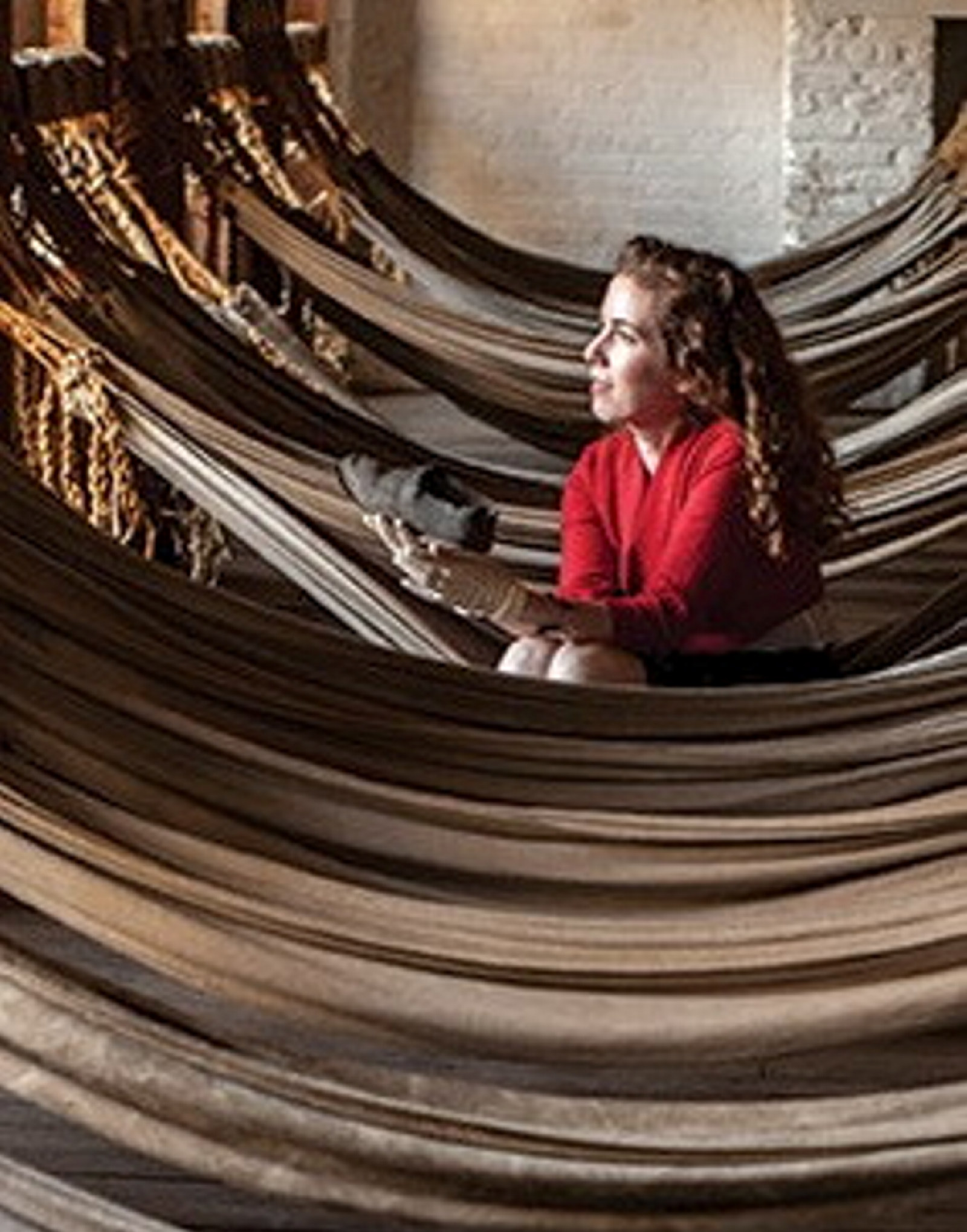1836
By 1836, two-thirds of the convicts in the colony were out working for private masters, and government convicts made up only a small group. But in some way, the barracks controlled them all – it had become much more than just a place to eat and sleep for ‘government men’.
For convicts arriving on the transport ships, working for the government or on private farms, for those who fell back into crime, feared secondary punishment, or dreamed of freedom, the Hyde Park Barracks was the centre of their world. It was a crossroads, where the convicts could find themselves taking a path to liberty or ruin.
With tens of thousands of wayward lives passing through the barracks’ gates, dark shadows had begun to fall. Convict numbers had reached an all-time high, with the enormous total of almost 1700 sleepers elbowing for personal space within the wards each night.1 Hordes arriving from the transport ships were being inspected in the yard too, by Colonial Secretary Alexander Macleay.
Where the convict is going to he cannot say until he is called by name … to a good master or a bad one, all is a chance …
Convict Charles Dolphus, remembering 18362
In August, the transport ship Moffatt unloaded a record convict cargo of 396 men, who flooded the barracks’ yard for inspection and assignment.3
… on landing we were drafted to Hyde Park Barracks, which formed the general depot at that time for receiving prisoners … myself, together with eighteen or nineteen of my companions in misery, were forwarded to different masters in Richmond …
Convict Martin Cash, remembering 18284
Distribution
Much-needed convict sleeping wards on the ground floor had several years before been stripped out to accommodate offices for the new Assignment Board.5 that dealt with an endless stream of applications from settlers to have convict servants assigned to them. From these offices, the Principal Superintendent of Convicts, Frederick Augustus Hely, controlled the activity of convicts all around the colony.6 He kept track of the whereabouts of every individual, and controlled the movement of convicts being transferred between the barracks and other penal establishments, such as John Woodcock. The convict clerks sometimes accepted a few coins to write out the words dictated by other barracks convicts like William Grady and John Graham, who pleaded for the governor to reduce the length of their sentences.
Deputy Superintendent Timothy Lane had just begun work at the barracks. Known as a ‘bear in human shape’7 he managed the place with an iron fist. The convicts thought he was a ruffian and often saw him drunk and unable to do his job fairly.
… by his ruffiancy, drunken conduct and consequent cause, men fly to the bush to escape his vengeance.
Convict ‘Humanitas’ to Governor Gipps, 18428
For most convicts, life at the barracks under Lane’s tyranny was a miserable existence, and the temptation of freedom was tantalising. So many convicts ‘bolted’ (ran away) from the barracks and worksites that a trusted man named Driscoll was sent to New Zealand to see if he could find any of them there.9 The most devious type of runaway convict was the bushranger, like Irish convict Jack Donohoe, the ‘Wild Colonial Boy’, killed in a gunfight by a group including former barracks convict Michael Gorman.
Bad behaviour
At the gates during regular morning and evening inspections, the constables and gatekeepers accepted coins to turn a blind eye to contraband entering the gates, or handed out false passes for men to be out late.10 There were still some honest men among them, though – after reporting on a case of corruption, overseer Podmore feared for his life and begged to be removed from the ward where the men had threatened him.11
In the northern buildings, a Police Office and Court of General Sessions had been fitted out to conduct trials for secondary crimes,12 because some convicts just couldn’t stay out of trouble. Hauled in on Mondays, Wednesdays and Saturdays,13 these secondary offenders faced a stern panel of prominent colonial gentlemen appointed as magistrates, including Samuel Augustus Perry, James Busby and Captain William Dumaresq.14 A few hundred cases were heard every month, for bad behaviour like swearing, laziness, disobedience, drunkenness, returning late from work and theft.15 Convict women attended this court too – Scottish woman Ann Carruthers was called to the court 14 times!
On Monday mornings the barracks bench was busy dealing with those who’d been found drunk and rolling about the streets over the weekend. Convicts didn’t just drink out on the streets, though; they also managed to bring beer, wine and spirits into the sleeping wards. So much for the rules about no alcohol in the barracks.16
Magistrates of the Hyde Park Barracks Court of General Sessions: Samuel Augustus Perry, James Busby and Captain William Dumaresq
Punishment
Solitary confinement in the cold, dark cells for up to 21 days was the Superintendent’s cure for drunkenness; but this year the cure failed when James Pedley, a convict who worked next door at the Rum Hospital, died while locked in the cells to sober up.17
The bench dealt with other offenders by sending them to work in leg-irons, forged by the blacksmith, or to walk mind-numbing days on the treadmill.
... my heart sunk within me on my arrival here, for almost the first thing I saw was a gang of my fellow unfortunates, chained together working like horses, I was completely horror struck …
Convict Edward Lilburn, describing the mid-1830s18
But in recent years, the barracks’ officials’ favourite punishment was flogging, or whipping with a cat-o’-nine-tails. Convict scourgers Edward Steele and John McDonagh were paid a salary to do this dirty work,19 and were given separate sleeping quarters, for their own safety. Surgeon James Mitchell from the Rum Hospital was in attendance to ensure that the men being flogged were not in danger of mortal injury.20 Convict Charles Dolphus was flogged in this year at the barracks, after attempting to flee the colony.
... the cry was given, flogger stand by, and as he came up he called who is the first; I think I was the fourth that was called, and was soon strapped to the triangle, and felt the cat on the flesh, and heard the constables count one, two, three, four, mingling with the flogger’s hiss ...
Convict Charles Dolphus (later known as Charles Adolphus King), remembering 183621
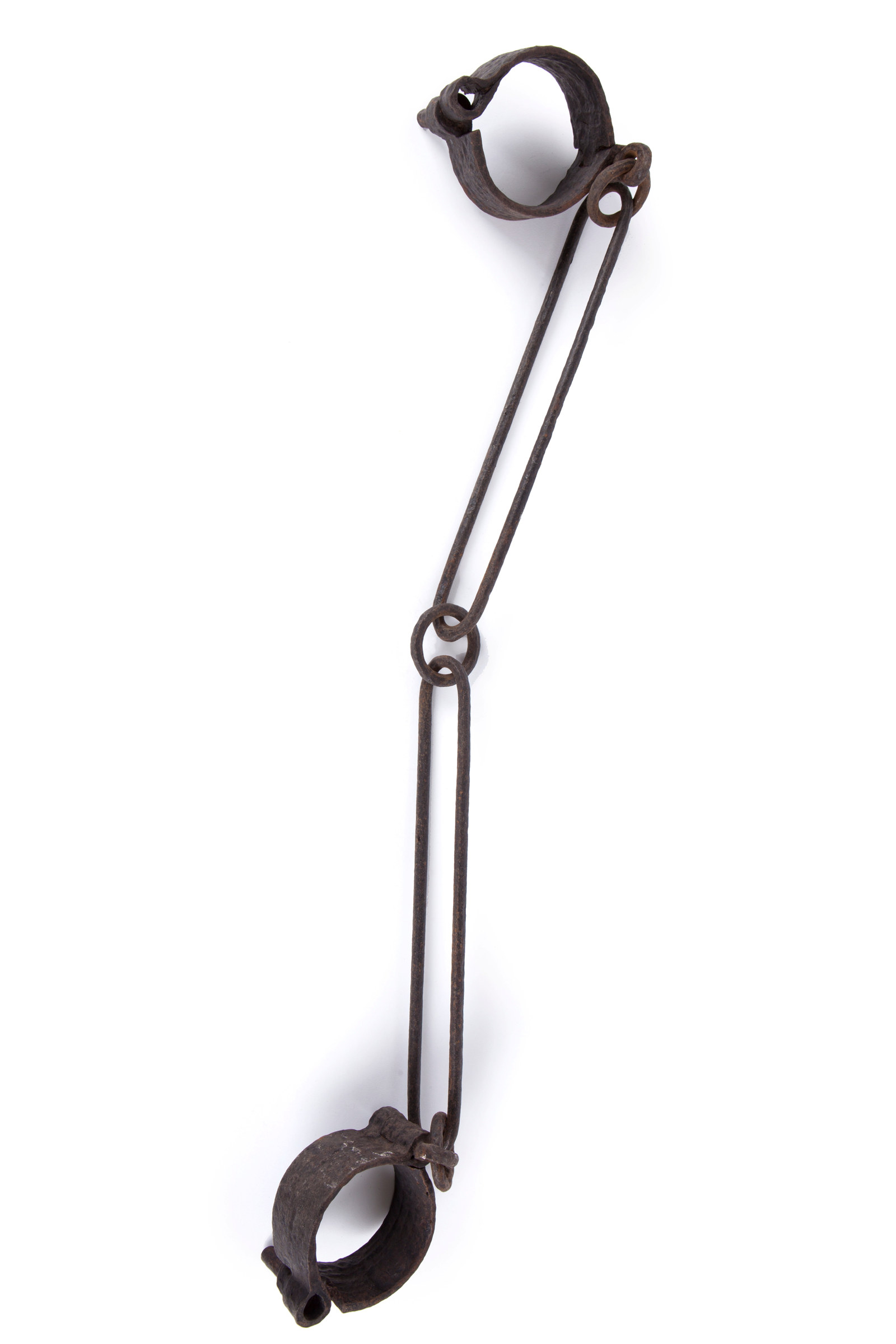
Convict Sydney
Leg Irons, bar link
Known as darbies or slangs in the convict ‘flash’ slang language, leg irons came in various shapes and sizes

Convict Sydney
Cat-o’-nine-tails
One of the most common forms of convict punishment was flogging (whipping) with a ‘cat-o’-nine-tails’
Hospital
After being untied from the triangle and staggering away, the flogged convicts were left in the sleeping wards to wallow in their misery and pain, ordered back out to work, or carried to the Rum Hospital, where they received medical treatment, of sorts. The lucky ones might have been given medicine to relieve the pain. Convicts who died at the hospital, like David Stuurman, were usually buried at the burial ground near the Brickfields (now Haymarket).

Convict Sydney
Rum Hospital glassware
These medicine bottles, irrigation syringe and measuring glass fragments were used for the treatment of convict patients
Rations
Arriving in the mess halls for breakfast, hungry convicts now enjoyed half a pound (227 grams) of maize meal hominy, but at least it was made more edible with 1 ounce (28 grams) of sugar for each man,22 mixed into the mush as it bubbled away in the pot. Those unlucky men who had done time walking the treadmill, which ground the corn for the hominy, might have appreciated their breakfast more than the others. Any convict who had acquired tea leaves, and had a penny to spare, could pay the barracks’ cook to boil some water to make tea, a penny being the cost of the extra coal for the fire.23
... our breakfast was called hommoney [sic], made from Indian maise, or corn very bad in taste, but improves by use and hunger …
Convict Charles Dolphus, remembering 183624
Dinner (lunch) was the usual fatty, salty stew, made with 1 pound (454 grams) of fresh beef and a quarter of an ounce (7 grams) of salt for each man, and a few vegetables.25 There was plenty of bread to go around, and in January one convict found a good use for his bread ration, hiding £63 in it26 – maybe his winnings from a recent game of cards. The convicts would probably have been suspicious of the cooks, bakers and storemen, who were known to take some of the prisoners’ beef, sugar and soap for their own use.27 Each day, all of these rations were carted into the barracks, and the storekeeper stacked the sacks and crates onto the shelves in his store in the northern buildings. He was also kept busy, day and night, protecting the stores from hordes of rats. Once, the storekeeper reported he had killed 352 rats in one month!28
Work
Fed up and worn out, the government men marched out as usual every morning after the bell called them to muster. For most, the work continued to be dreary, back-breaking and hazardous. With no incentive to work hard, some of the gangs got a reputation for being lazy and useless.
Allow me to direct your attention to the gang of Hyde Park Barrack Convicts, at present employed in trenching ground at the south Domain gate ... A more complete burlesque of labor, or a more shameful waste of time, I should think it difficult to parallel.
Sydney Herald, 183629
My employment was that of drawing a cart with four other men … I thought our work was very laborious, which was increased by a burning sun.
Convict Charles Dolphus, remembering 1836
Clothing
By winter, many of the gang workers’ shoes were almost destroyed, or they had worn out totally. This was blamed on the bad weather and poor state of the roads. The government now gave convicts three pairs of shoes a year, but some convicts wanted more. Once, a stolen shoe was found concealed inside a man’s shirt – he was sentenced to three months’ work in an iron gang.31 Another man, Calvin Sampson, who stole a pair of shoes, got 50 lashes of the cat-o’-nine-tails.32
Slop clothing continued to be handed out, now with a more generous issue of three shirts per year. Convicts were allowed to keep their old clothing,33 stashing it away for use as extra layers in winter or for patching and mending. Sloppy by name and nature, the clothing was not a good fit for many of the men, so they improvised ways to keep their pants up, by recycling materials to make belts and braces. Also, convicts didn’t get socks, so they invented ways to keep their toes comfortable.rs in winter or for patching and mending. Sloppy by name and nature, the clothing was not a good fit for many of the men, so they improvised ways to keep their pants up, by recycling materials to make belts and braces. Also, convicts didn’t get socks, so they invented ways to keep their toes comfortable.
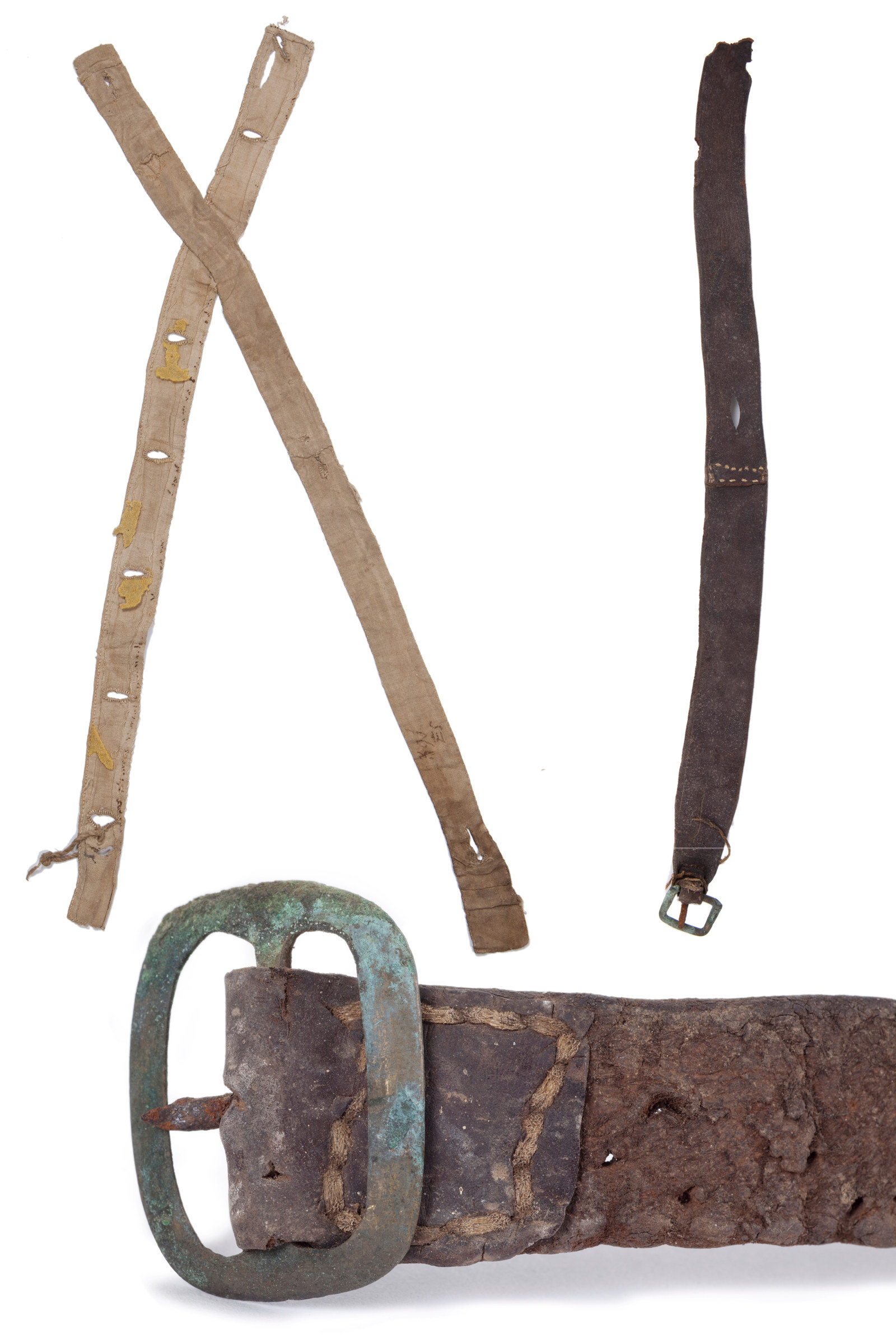
Convict Sydney
Convict Braces & Belts
Convict ‘slop’ clothing was one-size-fits-all, so some convicts had to improvise ways to keep up their baggy trousers
In the wards
In the cavities beneath the floorboards of the sleeping wards, hundreds of rats had by now made cosy nests, drawn to the warmth of so many bodies on the floor and scraps of bread stashed away for convict snacks. During heavy rain the roof leaked, dripping all night on the sleepers below, and many of the hammocks were now so filthy that their replacement with iron beds had already been planned.34
After lights out, with so many men and boys thrown into the wards together, the young were at the mercy of older men, and were sometimes sexually assaulted. Other convicts got involved willingly with other men, taking their chances in the darkest corners of the wards at night or in empty wards during the day.35 But such behaviour was forbidden, and anyone caught in the act was sentenced to the treadmill, flogging, or transportation to Cockatoo Island or Norfolk Island.36
Convict life, in the barracks of Sydney, is open to every temptation… the poor creatures cannot withstand the temptations with which they frequently meet, particularly when tormented by hunger.
Convict Charles Dolphus, remembering 1836
Irish convicts banded together, speaking Gaelic among themselves, excluding their English counterparts from the conversation.38 Some evenings, Irishman Francis Macnamara might have recited one of his improvised poems, firing witty jokes and stabs at the penal system, to the uproar and applause of his convict mates.
Church
On Sundays, the convicts mustered as usual to attend the mandatory Divine Service, the Protestants crossing the road to St James’ Church, and the Roman Catholics marching off to St Mary’s Chapel nearby.39 Here, barracks convicts joined ticket-of-leave holders and married convicts living out of barracks, who were also required to show up. But in recent years, many convicts had found devious ways to avoid sitting for an hour on the cold, hard church pews. Some woke up on Sundays with mysterious illnesses that required attention at the hospital, and others escaped while the gangs were en route to the churches.40 A few years previously the Protestants, who were required to attend two services each week, had tried to convert to Catholicism in order to attend church only once a week.
Footnotes
1. Convict Joseph Lingard noted there were 1700 sleeping at the barracks in May 1837: Joseph Lingard, Narrative of a journey to and from New South Wales, Chapel-en-le-Frith: s.n., 1846, p24.
2. Charles Adolphus King, Life of Charles Adolphus King, Bingley, John Harrison and Son, 1850, p15.
3. Sydney Gazette (SG), 27 September 1836, p2.
4. Martin Cash, The Bushranger of Van Diemen’s Land, in 1843-4, a personal narrative of his exploits in the bush and his experiences at Port Arthur and Norfolk Island, J Walch & Sons, Hobart, 1870, p4.
5. James Backhouse, A narrative of a visit to the Australian Colonies, Hamilton, Adams and Co, London, 1843, pp454–5.
6. Sydney Monitor, 6 March 1830, p2.
7. Colin Roderick, John Knatchbull: From quarter deck to gallows, including the narrative written by himself in Darlinghurst Gaol, 23rd January – 13th February 1844, Angus & Robertson, Sydney, 1963, p102.
8. ‘Humanitas’ to Governor Gipps, 12 December 1842, SRNSW 4/2602, p16.
9. Sydney Herald, 7 November 1831, p4.
10. SG, 12 December 1827, p2.
11. SG, 8 March 1834, p2.
12. SG, 3 August 1830, p3.
13. Letter of 8 January 1835 written by Principal Superintendent Frederick Hely, quoted in James Mudie, The felonry of New South Wales, Whaley and Company, London, 1837, p131.
14. Copies of letters sent by magistrates, HPB, 3 Jul 1830-31 Jan 1848, CGS 12874, SRNSW 2/670, reel 2650; 4/5721, reel 2651.
15. Copies of letters sent by magistrates, HPB, 3 Jul 1830-31 Jan 1848, CGS 12874, SRNSW 2/670, reel 2650; 4/5721, reel 2651.
16. Instructions for the Guidance of the Superintendent and Subordinate Officers, of the Establishment of Convicts in Hyde Park Barracks, R Howe, Government Printer, Sydney, 1825, p9.
17. SG, 23 January 1836, p3.
18. Edward Lilburn, A complete exposure of the convict system, Thomas Colmer, Lincoln, Herts, 1840, p4.
19. Edward Steele, arrived on Guildford, volunteered to be scourger on 1/1/1836, Col Sec letters received SRNSW 4/2310; Letter of 22/11/1836 asking that John McDonagh be officially appointed as scourger at HPB at usual pay, Col Sec letters received SRNSW 4/2312.
20. J Mitchell, Statement of the case of Jas. Mitchell, Esq., late surgeon on the civil establishment of New South Wales, Sydney, 1838?, p42.
21. King, p26.
22. Based on 1831 ration, Report of the Board of Inquiry on Convict Rations, 1831, SRNSW 4/1105.2
23. Principal Superintendent of Convicts to Colonial Secretary, 23 September 1836, Col Sec letters received SRNSW 4/2311.
24. King, p15.
25. Report of the Board, 1831.
26. SG, 16 January 1836, p2.
27. Storekeeper Henry Green was charged with stealing beef, sugar and soap – see Thomas Cook, The exile’s lamentations, Library of Australian History, North Sydney, 1978, p16.
28. Sydney Monitor, 11 May 1831, p4.
29. Sydney Herald, 21 April 1836, p2.
30. King, p15.
31. SG, 7 January 1828, p3.
32. Report from Select Committee on Transportation, together with the Minutes of Evidence, Appendix and Index, British Parliament, House of Commons Papers 518 (XIX.1), vol 19, 1837, appendix no 2, p89.
33. Principal Superintendent to Colonial Secretary, 12 July 1837, Col Sec letters received, SRNSW 4/2352.
34. SG, 24 July 1834, p2.
35. Report from Select Committee on Transportation, Minutes of Evidence, pp66–9.
36. See HPB convict database for convicts punished.
37. King, p21.
38. Sydney Spectator, 20 November 1841, p1.
39. King, p15.
40. SLNSW, Mitchell Library MSS 508; Sydney Herald, 24 October 1833, p3.
41. The Australian, 11 July 1827, p4.
Published on
Convict Sydney
Browse all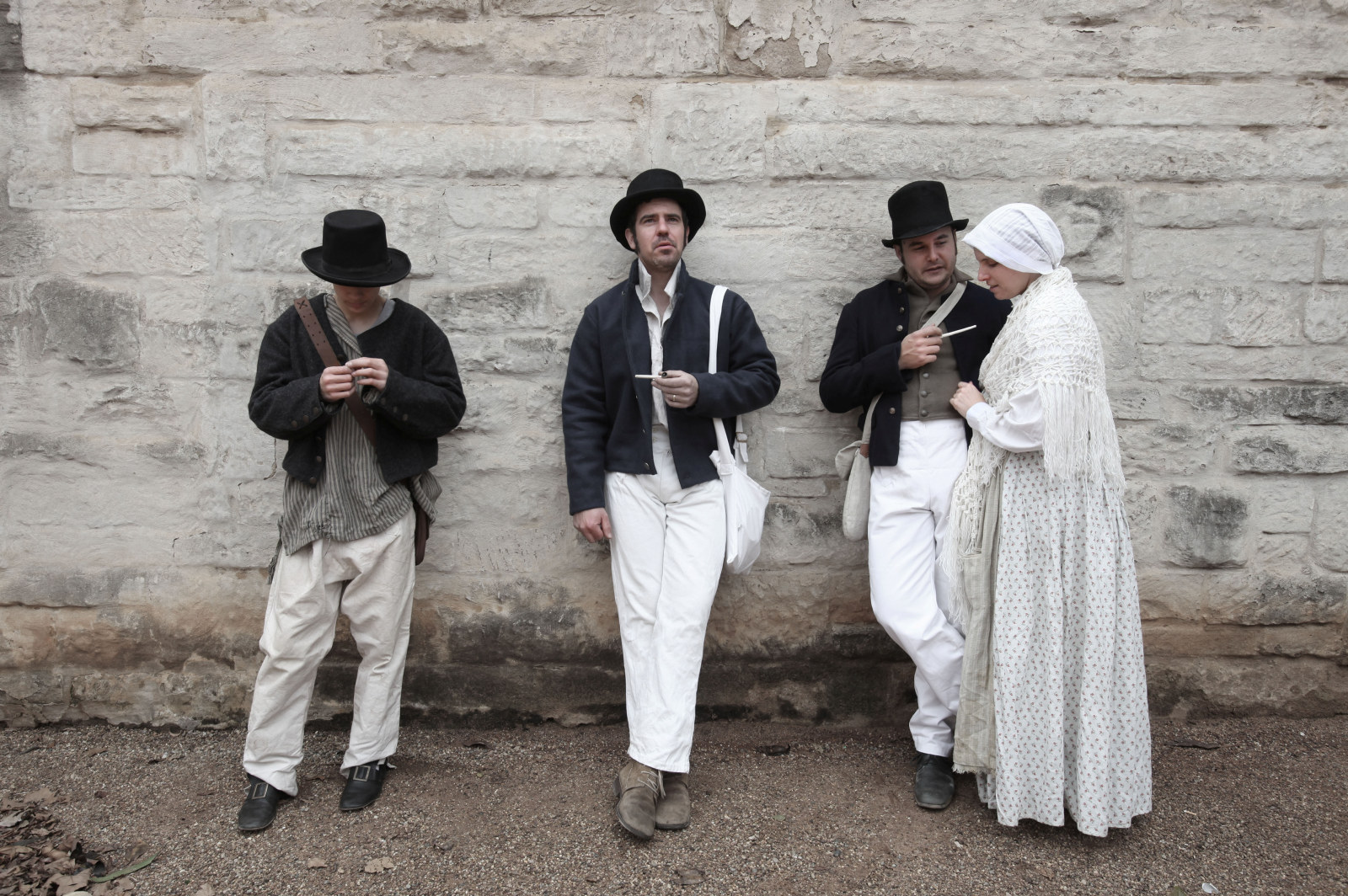
Convict Sydney
1801 - Day in the life of a convict
In the young colony, there was no prisoner’s barrack - the bush and sea were the walls of the convicts’ prison
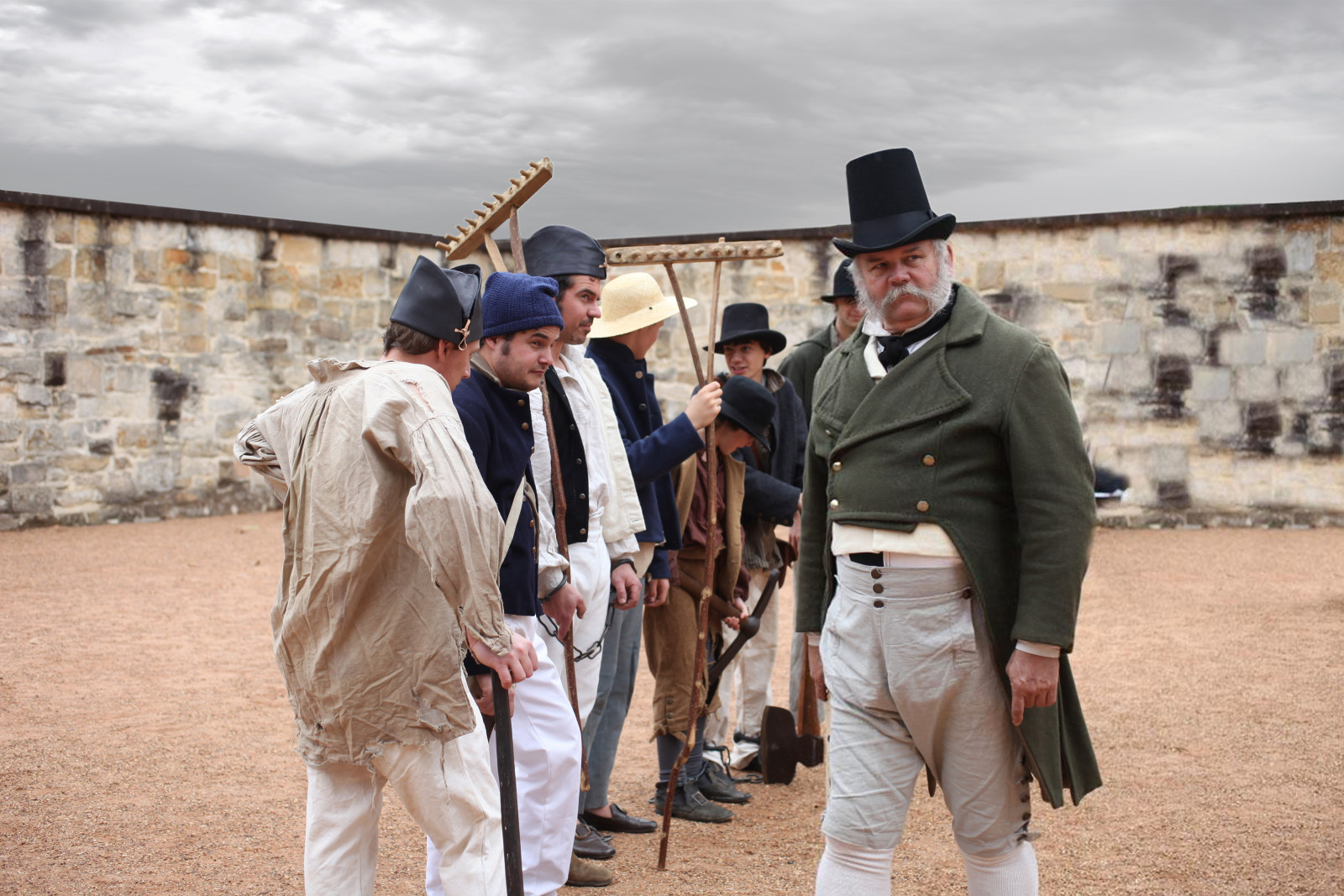
Convict Sydney
1820 - Day in the life of a convict
By 1820 the days of relative freedom for convicts in Sydney were over

Convict Sydney
1826
The hot Sydney summer of 1826 ended with almost 1,000 convicts living at the overcrowded Barracks

Convict Sydney
1844 - Day in the life of a convict
Fraying at the edges, these were the Barracks’ darkest days with only the worst convicts remaining
